Events
Malahat-sponsored Panel Discussion
To Tell The Truth:
The Many Faces (and Controversies) of
Creative Nonfiction
Summary of the Panel Discussion that took place May 28, 2011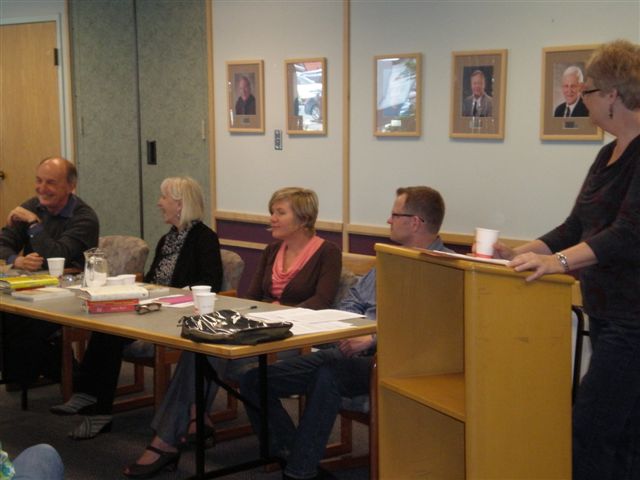
Tell the Truth, the Whole Truth, So Help Me – What Do I Do?
So many creative nonfiction writers constantly worry over sticking to the absolute truth and never consider crossing that barbed wire fence into the fog of imagined fact. Others disregard that fence completely and tigers have dialogue, memory becomes pliable, and the truth is the author’s own telling of it. At The Malahat Review’s panel, To Tell the Truth: The Many Faces (and Controversies) of Creative Nonfiction, authors David Leach, M. A. C. Farrant, George Sipos, and Christin Geall discussed the challenges and issues faced by writers of creative nonfiction.
“Everyone that encounters the term creative nonfiction, finds it slightly odd and bewildering,” said David Leach as he began the discussion. He gave an overarching history of the genre from its roots in Ancient Greece to its present form, “a big tent of diversity: of styles, voices, and approaches to writing … it [is] more than the truth or true story dressed in narrative.” As [Malahat Creative Nonfiction board member] Lynne Van Luven would say, it is a magpie genre.
Anyone left wondering what a CNF story really looks like should check out the winning story of The Malahat Review’s 2010 Creative Nonfiction Prize, “Intimate Strangers,” by Eve Joseph in issue #173, Winter 2010 [this story also won the Creative Nonfiction Collective's 2011 Readers' Choice Award and a Gold Medal for Best Article BC/Yukon at the 2011 Western Magazine Awards]. According to David Leach it is a personal essay in the classic sense, with “fragmented sequences of anecdotes, observations, and literary allusions, all tied together by the author’s perceptions and poetic ear, rather than an overarching story.”
With the introduction finished, each panelist was invited to the podium to discuss their work and how it fits into the genre of creative nonfiction, or if they chose, just their perspective on the genre.
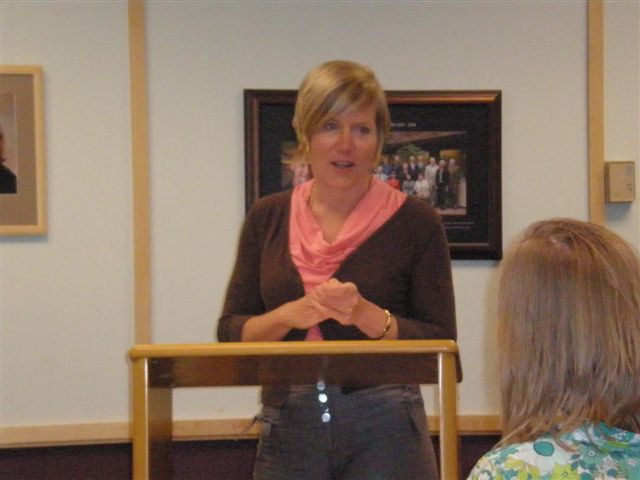
Christin Geall briefly mentioned her work as a grad student and how in such a program much of the work produced quickly became predominantly memoir since a large volume needs to be written in a short time. Geall has a fiery passion for CNF and quickly turned the discussion to fake memoirs/nonfiction, how they come about and who is getting caught and why. “People love true stories,” says Geall, creative nonfiction has become such a major part of pop culture in the last ten years that, “everyone is writing memoir, and just like currency, counterfeits begin to show up.” When authors are caught people ask why didn’t they just call it fiction from the start? “Well fiction doesn’t sell… True stories have been the currency all the way back to St. Augustine’s Letters.” According to Geall it is an easy formula to fake, and “every time one of these memoirs is debunked writers and critics get together to discuss what constitutes nonfiction. Often there is an argument put forward for emotional truth, which is supposed to cover lying. My definition of nonfiction is simple: it is a radically subjective account of events that objectively took place.” There is tension between memory and what actually took place, which makes the genre so fascinating. For Geall there is also a difference between the memoir as a novel and the personal essay that leans on the idea of truth and questions the author’s own sense of memory and the idea of truth. Nabokov’s Speak Memory is an example of this style.
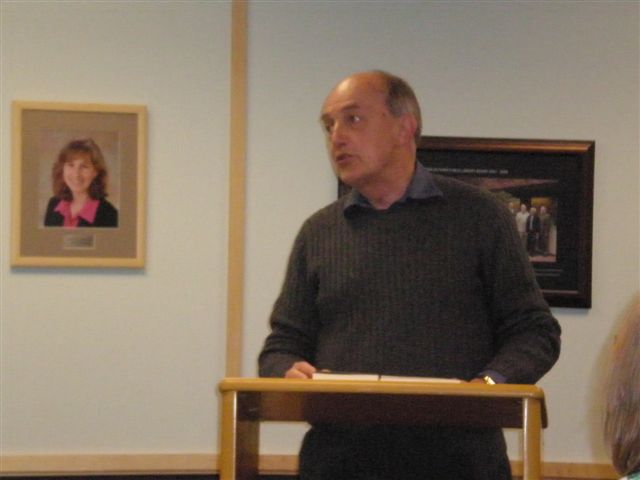
Until George Sipos’ book, The Geography of Arrival: A Memoir, was nominated for the Charles Taylor Prize for literary nonfiction he had never considered his work to be nonfiction. “The concept of genre really doesn’t matter,” to this veteran bookseller and author. What does matter is good writing. “Readers respond to good writing, they respond to the book if the book catches their attention and provides them with some kind of structural delight or pleasure, and its genre doesn’t really matter to readers. It certainly doesn’t matter to writers.” As Sipos went on to discuss the organic formation of his memoir, how it evolved from writing letters to someone who was visiting a town in Ontario that he used to live in, he continued to note how as a writer he was simply interested in exploring the old places he used to know, following wherever the story led him in the writing process. He wasn’t concerned if his work was “true” or make believe, he just wrote the story for its own sake. It wasn’t until the book was being published and his editor insisted that the book be labeled with a genre in order to put it on the right shelf in bookstores, that it became a memoir. Sipos explained, “Was it a memoir? Sure because much of it actually happened. Was it a work of fiction? Yeah, a fair bit of it is made up. Was it a guidebook? Damn right. So the concept of genre held no interest for me.”
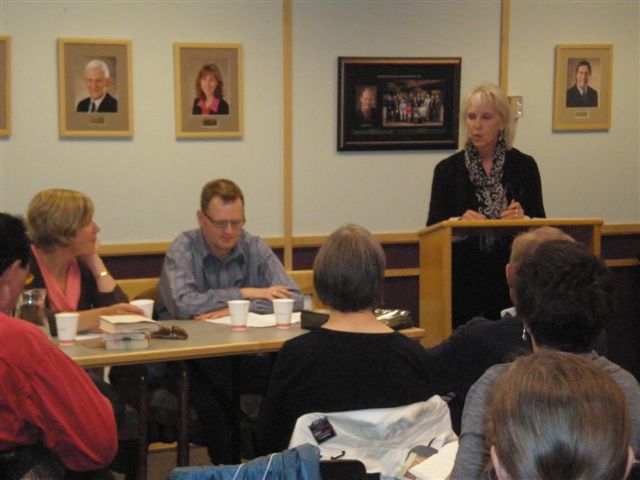
“The business of genre really is very interesting,” said M.A.C. Farrant as she took her place at the podium. “I want to talk about how I came to write My Turquoise Years which was my coming out for calling my work what it is, which is nonfiction.” The quote that inspired her approach to her first memoir was this, “We are shaped by our stories and by the stories of those who have loved us,” (from a memoir she reviewed for the Globe and Mail).
Instead of writing an entire life into a single book Farrant chose to focus on just six weeks during the summer of 1960 and two significant events in her life, her adolescence and her mother’s first visit since she was 5-years old. These two elements became, “the clothesline that carried the story along.” As long as she kept these two points in mind she was free to digress to tell any other story that took place in those six weeks. “I made up all of the dialogue in My Turquoise Years. I took courage from Frank McCourt’s Angela’s Ashes, and the scene of his baptism that opens the book. It’s a beautiful scene, but he couldn’t possibly have remembered the dialogue when he was only a week old. If he can do that, I can do that.” Her main issue in writing her memoirs, My Turquoise Years and The Secret Lives of Litterbugs, was “how do we remember what has passed? Do we display our memories, the stories we tell about ourselves like jewels on a tray and select the brightest ones? Are they that easily retrieved? Or more probable, is it that our stories are more like hauled baggage bumping along behind us, broken in places and with parts missing, roughened and paled by the years? I discovered that in remembering, what we do is select and refashion these artifacts from our lives, whether they were moments ago or years, piercing some together, discarding others like anthropologists.” The way a writer can weave the personal, a moving and important moment in her life, and the story she is supposed to capture, as well as the reality of time and place into a work of creative nonfiction is what makes the genre so remarkable.
Highlights from the Q & A:
David Leach - As someone who comes out of literary journalism I’m somewhat uncomfortable with the notion that genre doesn’t matter or that you can just make stuff up. There is a line that the writer is taught not to cross. Does a writer have an assumed or explicit contract with the reader when a writer creates a book that might get labelled as creative nonfiction? Is there a level of truth that must be maintained? What might that contract be?
M. A. C. Farrant – When I open a book I am actually opening someone’s mind. I am reading what they are thinking and what they are trying to tell me. I am aware of that when I am writing. I have a very hard time being shoe boxed into a specific form. My book that is coming out now, I’m calling it a novel of absence because it’s not a novel of the traditional understanding of a novel yet I am hoping that it engages on many levels. It’s a collage, a hybrid, a bit of this, a bit of that and something else too. There has to be a trust established by the hands of a writer … whether it’s a book of fiction, poetry, whatever. Is this a person you want to spend part of your life with as you read their story? Most of us who are writers read a lot and spend a lot of time with someone else’s work. The quality of writing too, can be convincing, the sentence structure makes it believable.
George Sipos – I think the writer’s primary contract is not with the reader at all, it’s with the story. A writer writes a structure of words, and crafts them, and chooses them, and chooses the material that shapes the entity. It’s like the sonata, the painting, some kind of organized formal thing which has not existed before but which now does. The primary responsibility of the writer is to create a text that is as rich, as metaphorical, as elusive, and comes in the most roundabout way, as necessary at some kind of truth. After it is written with the full range of the writer’s skill, his/her integrity or honesty to both the limitations of language as well as subject matter, what claims are then made for that in the world, that’s where these issues arise. I would suggest that those are not the issues of the writer in the act of writing.
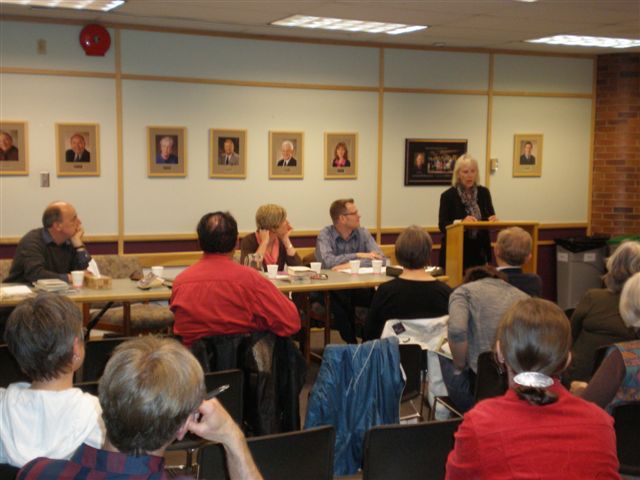
For George the truth in a text doesn’t matter if the writer has created a world, through language, that is engaging, that he wants to be drawn in to. However, he admitted that in a civil society where work is being sold as truth it does matter but he still argued that has nothing to do with the writer and the creative process.
No one spoke about the fact that writers write their stories and want them published, that agents and editors want stories to sell, and that because CNF is so popular it is so much easier to sell. Christin Geall touched on it by talking about how Susanna Kaysen, who wrote Girl Interrupted, said, “nonfiction is so popular because you can send the ‘I’ out on book tour. You are the person the story’s presented.”
Christin Geall – You have to be really big to get caught in a lie. The more sales you have the more likely you’ll get nabbed. I am a huge fan of prologues. In creative nonfiction the function of prologue is to frame the story in some way with the “now” perspective of the writer, explaining what has been changed or altered in the story line. The prologue allows integrity in the pursuit of truth.
M. A. C. Farrant - Amateurs are faithful to the facts and geniuses steal.
Why not avoid all the labels and call it story telling?
Christin Geall – Because it doesn’t cover the essayist or argument style of creative nonfiction.
M. A. C. Farrant – CNF allows a writer to delve so deeply into her mind, what she thinks and feels about certain topics, such as in nature writing. A writer is not merely telling a story about the finch she saw in the backyard, it has many layers and depths to it. Here is a quote from Reality Hunger by David Shields, who talks about the nailing down of literary creative nonfiction: “a memoir is a work of sustained narrative prose controlled by an idea of the self under obligation to lift from the raw material of life a tale that will share experience, transform the event, deliver wisdom.”
Christin Geall – Another way to think about it, and I could see this in an undergraduate workshop, somebody will bring in a “slice of life” some scene from memory and it is written like a short story and I’ve made a few suggestions, that perhaps that writer would be more comfortable in fiction but in the workshop itself when you look at the piece, the question the nonfiction writer asks is not what did you remember, but why did you remember and what does that say about you? So that they have to push a little harder on memory that way and enter into that self-reflexive place hopefully in the text.
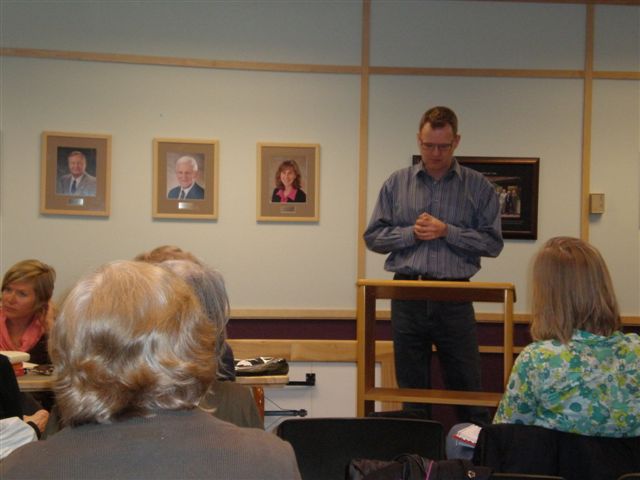
David Leach – In a way that is what George was doing, mining memory, instead of looking for stories, and recreating them almost like they were onscreen ... In nonfiction there is the possibility, and the impulse, to move vertically in a way that is refreshing, because there is so much other media—TV and certainly movies—that are good at narrative but they are not very good at entering people’s psyche and giving those insights. I think that is where the strength of any kind of literature lies.
[compiled by Malahat volunteer Vanessa Herman]
Read full guidelines for our annual Constance Rooke Creative Nonfiction Prize









